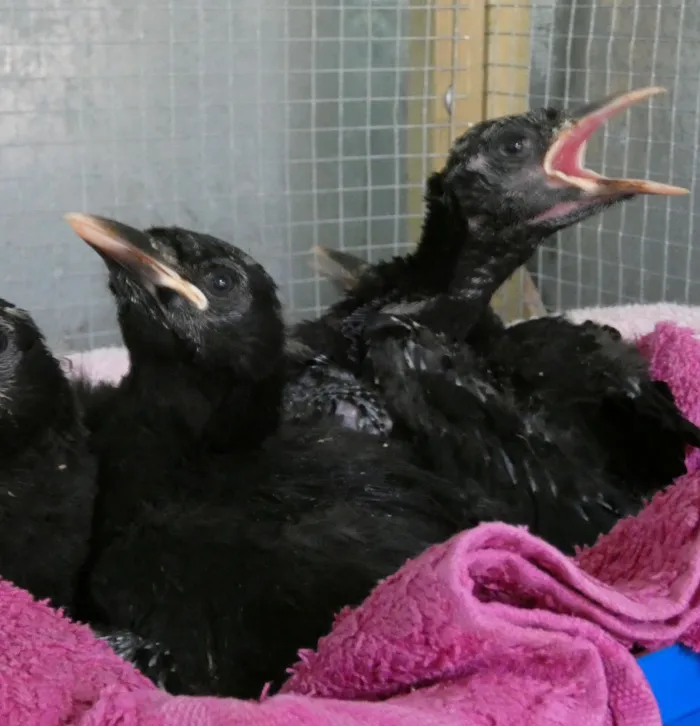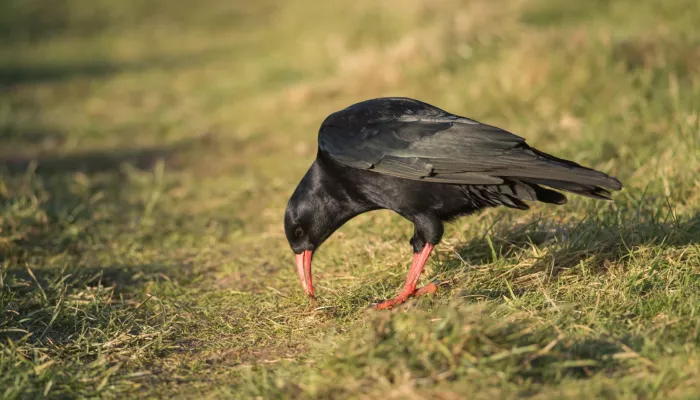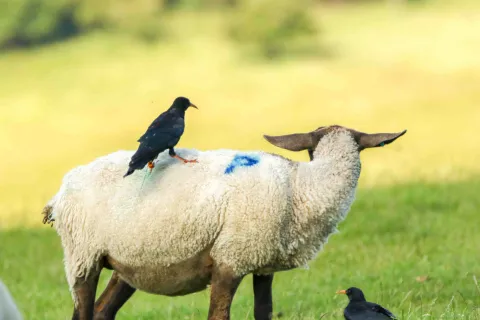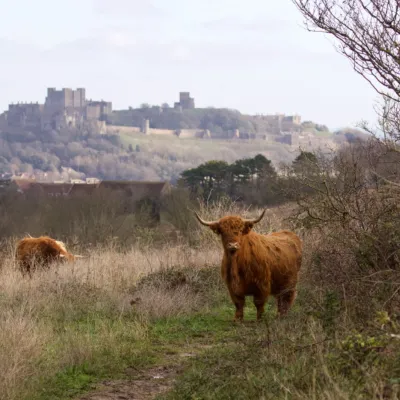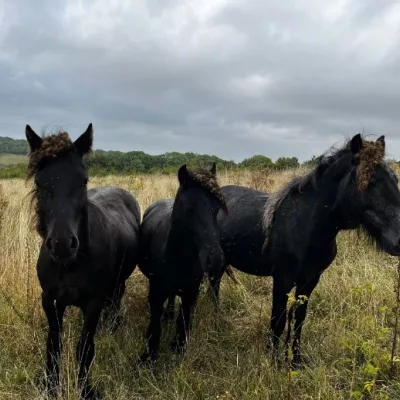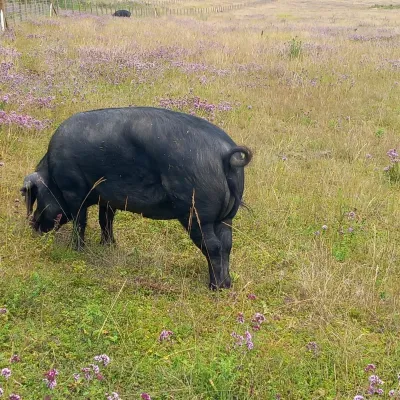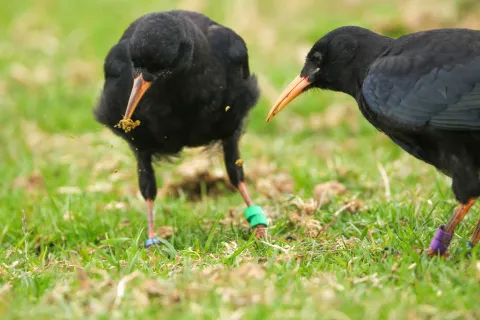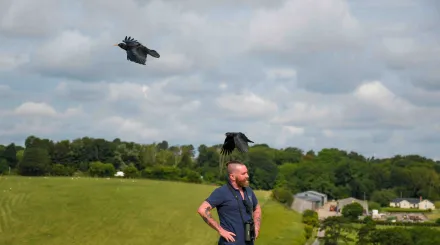
Paul Hadaway, Director of Conservation at Kent Wildlife Trust says:
Research also shows that restoring semi-natural grasslands like chalk grassland can sequester up to 11.6 tonnes of carbon per hectare per year – the equivalent of emissions from nearly seven passenger vehicles annually.
Unfortunately, chalk grassland has faced significant decline. Intensive farming practices, chemical treatments and habitat fragmentation have all contributed to its loss. By the late 20th Century, much of Kent’s chalk grassland had disappeared. It was clear that a coordinated effort was needed to restore this type of habitat, not only for its intrinsic value but also for the wildlife that depends on it.
40 years of restoration
For four decades, Kent Wildlife Trust has been working to restore chalk grassland habitat in Kent, alongside partners like Wildwood Trust, the National Trust and White Cliffs Countryside Partnership. Through conservation grazing and habitat connectivity projects, we have been dedicated to restoring and protecting this fragile ecosystem.
At least five valleys in Dover all run into a central point of chalk grassland and downland habitats which have been progressively restored. Feasibility studies undertaken as part of the project all indicate that the quality of chalk grassland habitat was suitable to start bringing missing species back, including those that had been lost to Kent for centuries…
The red-billed chough, an iconic bird with striking red legs and a curved beak, was once a familiar sight across Kent’s coast. Historically, choughs thrived in Kent’s chalk grassland, where they fed on insects living in the soil and livestock dung. But habitat loss and changes to grazing practices led to their local extinction. For years, the skies remained absent of their iconic call.
Thanks to the success of habitat restoration, the conditions are now right for choughs to return. Years of conservation grazing have restored the grasslands and boosted soil health, creating rich feeding grounds for the chough. Today, red-billed choughs stand as a powerful symbol of what we can achieve when we work with nature, not against it.
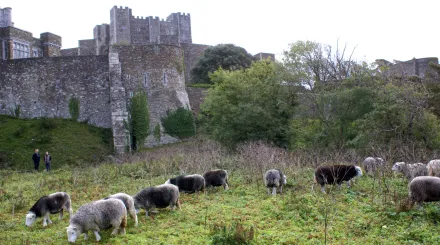
Conservation grazing: The key to success
However, the routine use of worming treatments in modern farmed livestock has contributed to a decline in soil-dwelling insect larvae, reducing food availability for birds like the chough. With the chough as our flagship species for chalk grassland in Dover, we are supporting other landowners to adopt naturalistic grazing, using animals whose behaviour mimics those that were once wild in the landscape.
Conservation grazing is not just about choughs. It delivers wider benefits for the environment, including improved soil health, water retention and carbon storage. By supporting grazing animals and restoring rare and biodiverse habitats, we are fighting biodiversity loss and tackling the climate emergency.
The return of the chough
The return of choughs to Kent marks a significant milestone for nature recovery. Their reintroduction demonstrates the incredible potential of conservation work to restore lost species and rebuild ecosystems. They’re more than just a charismatic corvid; they are a flagship species for chalk grassland restoration, showing what is possible when we commit to protecting and connecting these habitats.
The Chough Reintroduction Project also highlights the importance of collaboration. We are working with Wildwood Trust and Paradise Cornwall to release cohorts of choughs each year to reach a self-sustaining population. We’re also working with landowners and farmers to ensure that grazing management continues to support chalk grasslands and engaging with local communities with conservation thanks to the chough’s strong cultural links with our county.
How you can help
The journey to bringing choughs back to Kent for good is far from over. While we have made incredible progress, there is still much to be done. Here’s how you can help:
- Support the chough appeal this winter: We need to raise £50,000 by 31 January 2025 to fund the third year of releases. If we don’t raise enough, we risk a break in the breeding programme which could jeopardise the success of choughs in Kent. Your donations will help fund vital care for chicks, maintain aviaries and fund hand-rearing equipment for those chicks that require some extra support. Donate here.
- Spread the word: Share the story of the chough and Kent’s precious chalk grasslands. You can help raise awareness of the importance of conservation grazing and habitat management.
- Visit and volunteer: Check our volunteering pages for opportunities in the Dover area.
The return of the red-billed chough is a story of hope and dedication backed by decades of habitat restoration work. It shows us that when we restore habitats, reduce harmful practices and collaborate, nature can bounce back.
